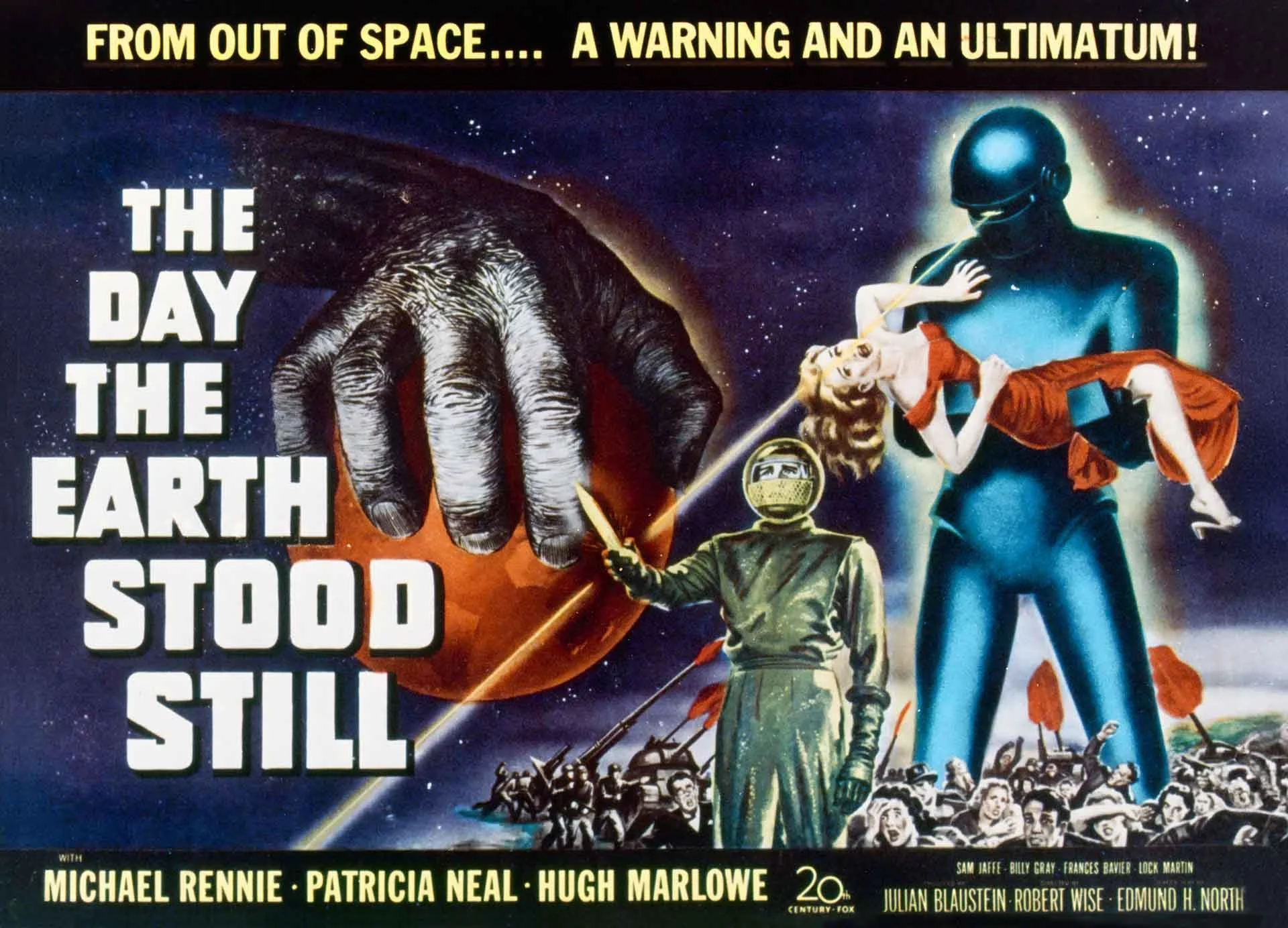Sci-fi with a conscience
The silver screens of the 1950s flickered with rockets, mutants, and alien skies — but beneath the spectacle, something stirred. These stories, born in the shadow of the Cold War, carried questions heavier than any ray gun could fire: Can we unlearn the violence we seem to breathe? Should we trust the scientists who promise salvation? And when the dust settles, what remains that makes us human?
Science fiction in the 1950s served as a philosophical laboratory, using alien invasions and futuristic tech to challenge the ethics of war, conformity, and human nature itself.
1950s science fiction didn’t just entertain—it interrogated.
-
1950s sci-fi often included strong moral or philosophical themes beneath the surface action.
Films like The Day the Earth Stood Still warned of global annihilation unless humanity evolved.
Forbidden Planet and others explored internal human flaws, not just external threats.
Many stories questioned the ethical limits of science and unchecked technological progress.
Sci-fi served as a space for moral reflection during an era of fear, silence, and censorship.
The Moral Universe – Allegory, Ethics, and Social Commentary
It’s easy to look at 1950s sci-fi and see only spectacle: flying saucers, glowing creatures, death rays. But in truth, many of these stories were quietly asking some of the biggest questions in human history. Because when society can’t talk openly about fear, guilt, or doubt—it tells stories instead.
Progress without conscience was the real villain.
One of the clearest examples is The Day the Earth Stood Still (1951), where an alien named Klaatu arrives not to conquer Earth, but to deliver a warning: evolve, or perish. It’s a plea for peace in the nuclear age—but it’s also a judgment. Humanity, seen from the outside, appears reckless and morally unfit for its own inventions. Klaatu’s robot companion, Gort, is the ultimate deterrent: an emotionless enforcer of cosmic law. In this story, progress without ethics leads to extinction.
Forbidden Planet (1956) goes even deeper, using the metaphor of invisible monsters to explore Freud’s theory of the Id. Here, the real danger isn’t aliens—it’s what we suppress inside ourselves. The film suggests that our greatest threat isn’t out there in space. It’s our own unacknowledged capacity for destruction.
Aliens weren’t always invaders.
Sometimes, they were judges.
Even the campiest films often carried threads of social commentary. It Came from Beneath the Sea (1955) features a radioactive octopus attacking San Francisco—yes, it’s absurd, but it's also a subtle condemnation of military overreach and environmental disregard. Similarly, The Incredible Shrinking Man (1957) begins as a freak accident story but ends with existential reflection: What is a man’s worth when he's no longer in control?
Many of these stories present scientists as either saviors or cautionary figures—echoing the real-life ambivalence Americans felt toward the creators of the atomic bomb. Are we wise enough to wield the tools we invent? Can knowledge exist without wisdom?
In an era of censorship and conformity, science fiction was one of the few places where these conversations could happen. Behind the monsters and rayguns, these films gave us space to wrestle with ideas too dangerous to name directly.
The most terrifying monsters were the ones we created ourselves.
1950s science fiction didn’t just entertain—it interrogated. It asked what kind of species we were becoming, and whether we deserved the powers we had unlocked. These stories didn’t offer easy answers, but they made space for moral imagination in an era that badly needed it. In a time when speaking out could ruin a career, science fiction whispered truths in the language of stars and shadows.







































